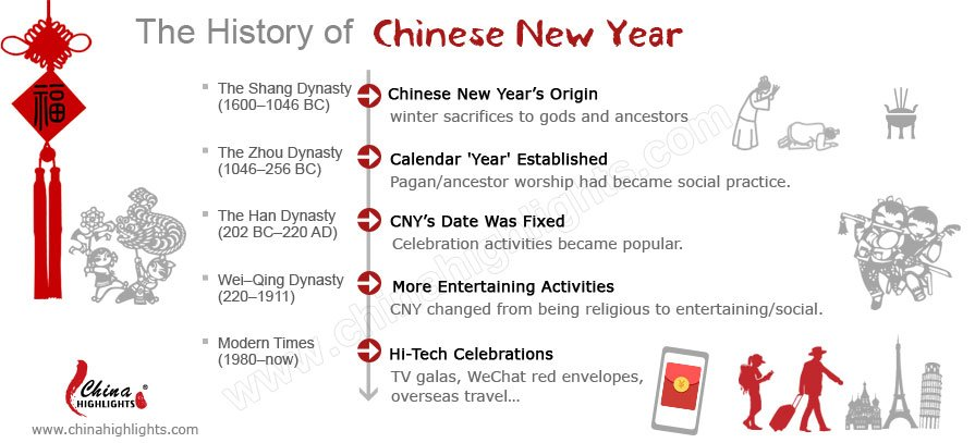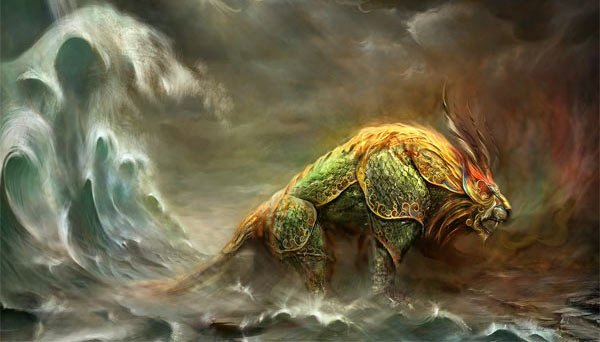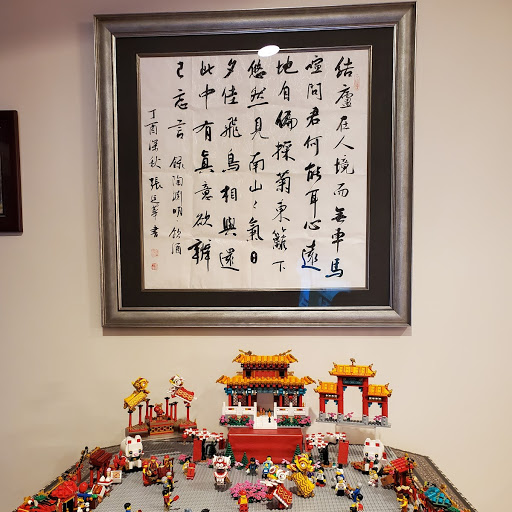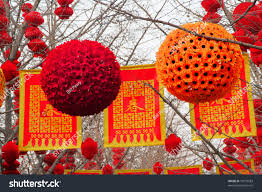CHINESE NEW YEAR
- TLALOCO
- Jan 29, 2020
- 4 min read
Updated: Feb 17, 2020
The Chinese New Year is upon us. It is always amazing to see similarities between Raza celebrated traditions and other ancient cultures. Explore this discussion and see what resonates with your history.
Legend of Monster Nian
According to tales and legends, the beginning of Chinese New Year started with the fight against a mythical beast called Nian, who had the body of a bull and the head of a lion. It was said to be a ferocious animal that lived in the mountains and hunted for a living. Towards the end of Winter when there was nothing to eat, Nian would come on the first day of New Year to the villages to eat livestock, crops, and even villagers, especially children. To protect themselves, the villagers would put food in front of their doors at the beginning of every year. It was believed that after the Nian ate the food they prepared, it wouldn’t attack any more people.
The villagers would live in terror over the Winter, but over time they learned that the ferocious Nian was afraid of three things: the color red, fire, and noise. So when the New Year was about to come, the villagers would hang red lanterns and red spring scrolls on windows and doors. They also used firecrackers to frighten away the Nian. From then on, Nian never came to the village again. According to legend, the Nian was eventually captured by Hongjun Laozu, an ancient Taoist monk, and Nian became Hongjun Laozu's mount.
After Nian was captured, everyone had a big celebration and the ritual involved in banishing him was repeated the following year, and so the ritual was passed down from generation to generation and the custom of celebrating New Year with firecrackers, noise, and the color red has persisted to this day.
Hence, on every New Year's Eve, people would paste red spring couplets, light candles, burn bamboos and later set off firework to ward off all the evil spirits. The entire village and town were ablaze with lights, and people would stay up to welcome the New Year.
Excerpts from
TRADITIONS
Chinese New Year is a 15-day celebration and each day, many families rotate celebrations between homes of their relatives. The Chinese New Year’s Eve meal is the most important dinner of the year. Typically, families gather at a designated relative’s house for dinner, but these days, many families often celebrate New Year’s Eve dinner at a restaurant. Many restaurants require reservations months in advance. The festivities are day-long and sometimes, a family ends up cooking two meals for their relatives, once at lunch and once at dinner.
Traditional Foods
Popular dishes used to be all made from scratch, but now people can easily buy them prepackaged at the supermarkets:
Eight Treasures Rice - which contains rice, walnuts, different colored dry fruit, raisins, sweet red bean paste, jujube dates, and almonds.
“Tang Yuan” – black sesame rice ball soup; or a Won Ton soup.
Chicken, Duck, Fish and Pork dishes.
“Song Gao” or "Nion Gao" - which translates literally as “New Year’s cake.” The word for cake sounds like the word for “tall,” or “to grow,” so eating this glutinous rice on Lunar New Year symbolizes growth, whether it be in career, income, health, or even height. A popular phrase that accompanies nian gao is 年年高升 (níanníangāoshēng), which means “to increase prosperity every year.”Originally, the dish was reserved for high deities and one’s ancestors, but it gradually made its way into the Lunar New Year feast.
“Jiu Niang Tang” – a sweet wine rice soup which contains small rice balls and wine.
Spring Rolls, are a traditional food of lunar new year. The name 春卷 (chūnjǔn) literally means spring and roll, and refers to the spring season. Originally, spring rolls were intended to combine all of the season’s freshest vegetables together in one dish as a way to celebrate spring. Now, it’s common to eat pan- or deep-fried spring rolls stuffed with pork or shrimp. Because of their resemblance to gold bars, it is said that people also eat spring rolls to attract good fortune for the coming year...or is it PuroChisme? Like dumplings, spring roll filling can be made based on personal preference. Traditionally, they’re made from pork, cabbage, mushrooms, and carrots, though there are sweet versions that are filled with custard or red bean.
Red Envelopes Called “hongbao” in Mandarin, and "Lai see" in Cantonese the red envelopes filled with money are typically only given to children or unmarried adults. If you’re single and working and making money, you are still expected to give the younger ones, Hongbao/Lai see, money. The color red denotes good luck/fortune and happiness or abundance in the Chinese culture and is often worn or used for decoration in other celebrations.
Dragons
Chinese traditions have regarded the dragon as the most potent of all symbols of energy and good fortune. Dragons are believed to be the harbinger of incredible luck, prosperity, abundance, consistent success and high achievement. It was said to represent potent propitious powers, especially control over rainfall, floods, and hurricanes. The dragon remain a very popular symbol that stands for valiance, heroism, boldness, self-confidence, power, excellence, perseverance, nobility, vitality and happiness. It brings about physical as well as spiritual well-being and strength. It is related to the spring season and is representative of auspiciousness and new beginnings.
Together with the Phoenix, the dragon symbolizes perfect balance. The dragon is a symbol of Yang and the phoenix of Yin and their union is representative of good luck, success, love, and enlightenment. The Chinese dragons are often depicted with a pearl under the chin. Generally, it is said that the pearl symbolizes riches, prosperity and great fortune, while some mystics believe it to represent wisdom, enlightenment, and truth.
The dragon is present in many Chinese cultural celebrations as the Chinese people often think of themselves as descendants of the mythical creature. On the fifth day of the New Year when many people have to start going back to work, they will also have dancing dragons perform in the front of the office building. On the 15th day of the New Year (Yuan Xiao Jie), they may also have a lot of dancing dragon performances. The dragon represents prosperity, good luck and good fortune.
Excerpts from https://supchina.com/2019/02/04/8-lucky-foods-to-eat-on-lunar-new-years-eve/ and https://www.ancient-symbols.com/dragon-symbolism.html









Commentaires